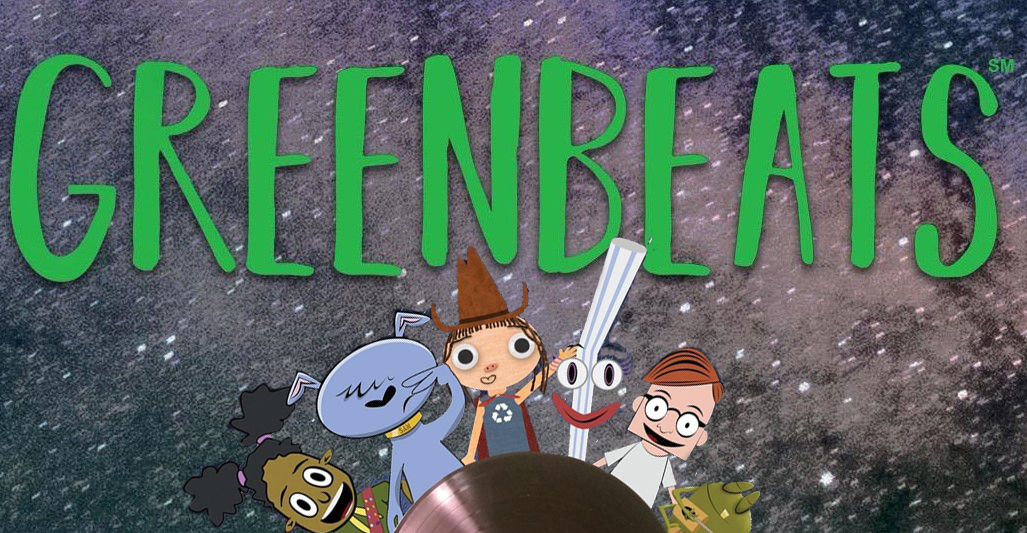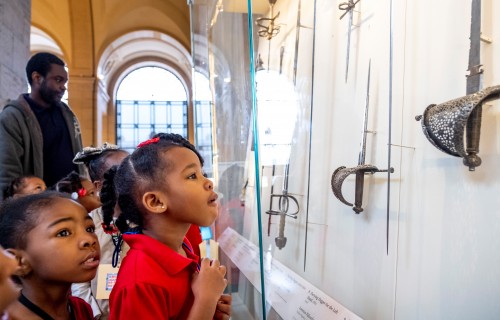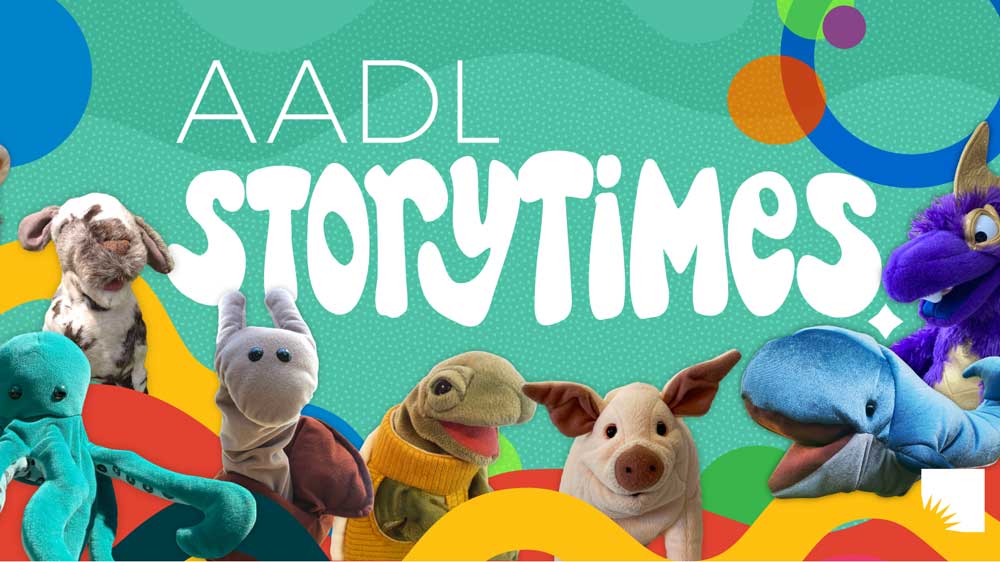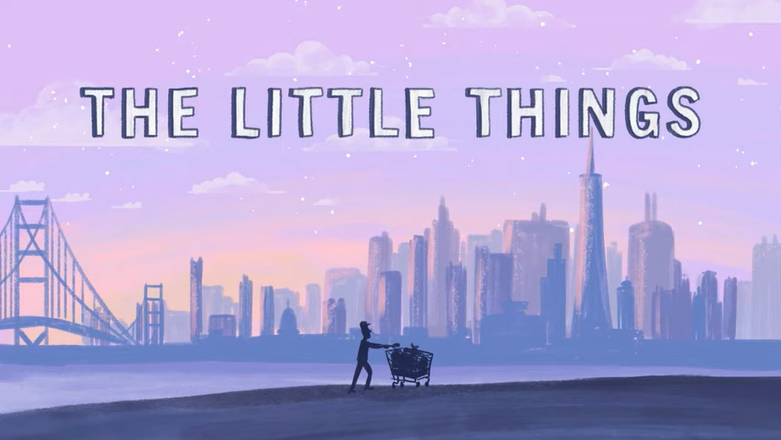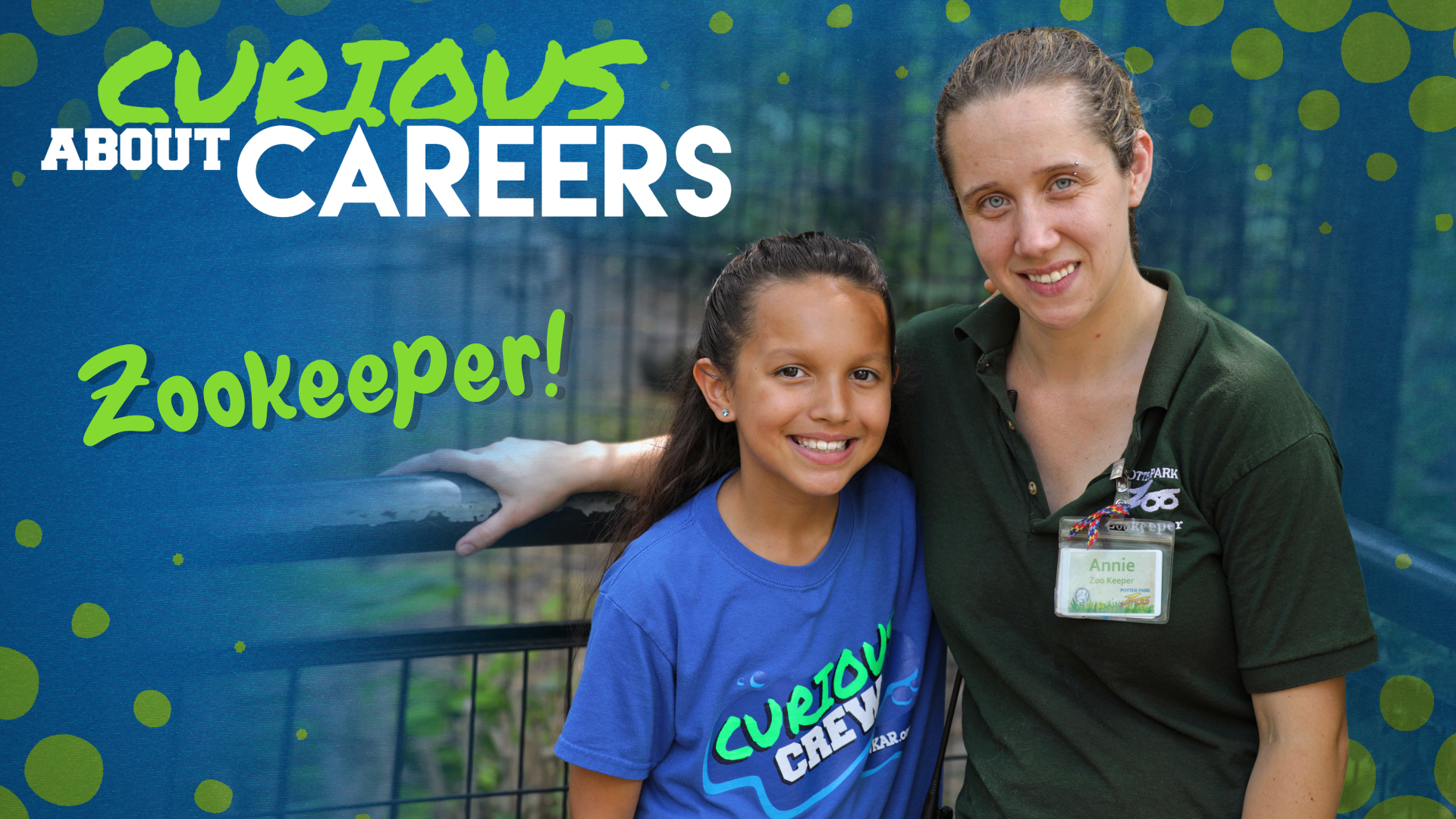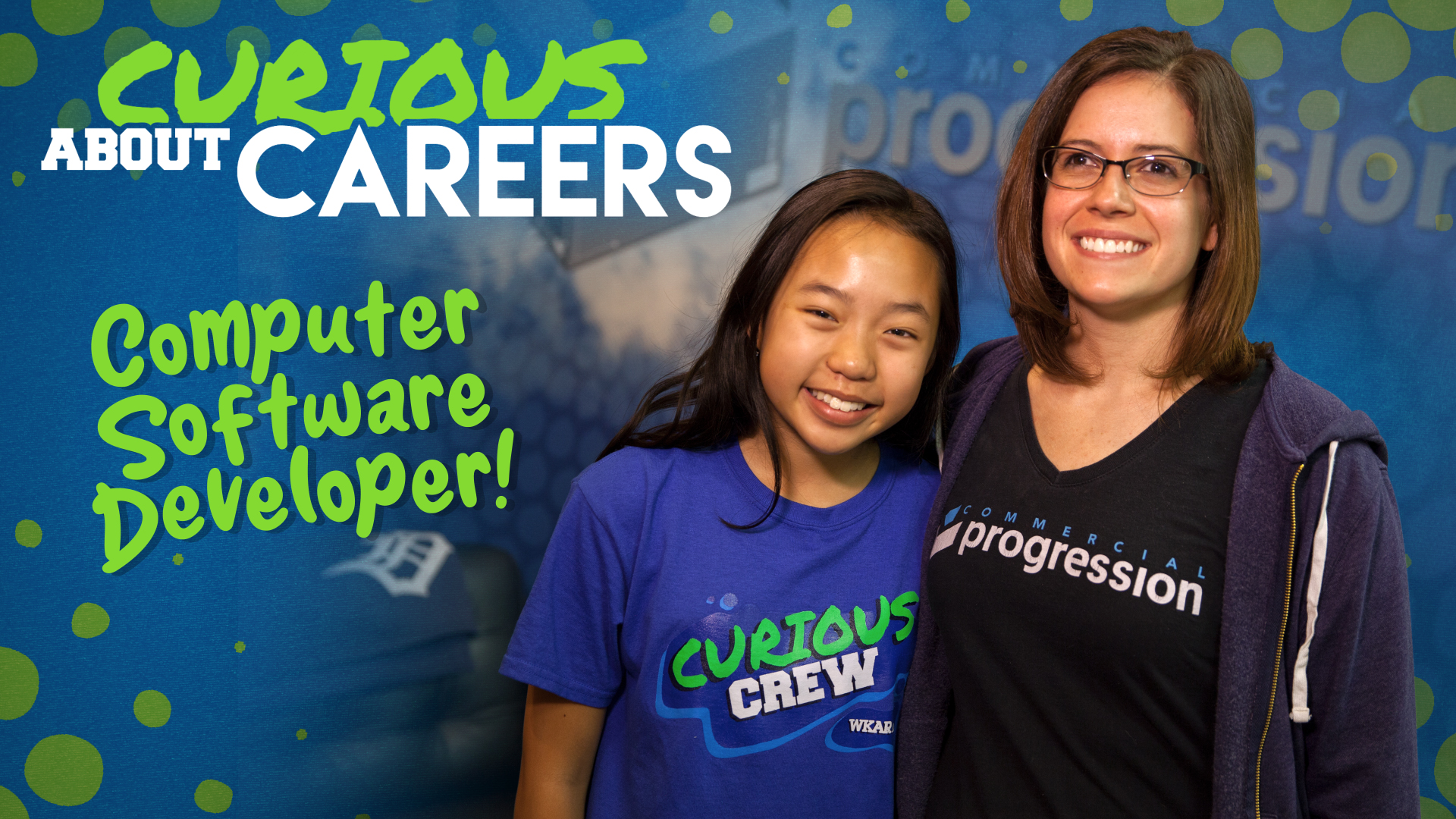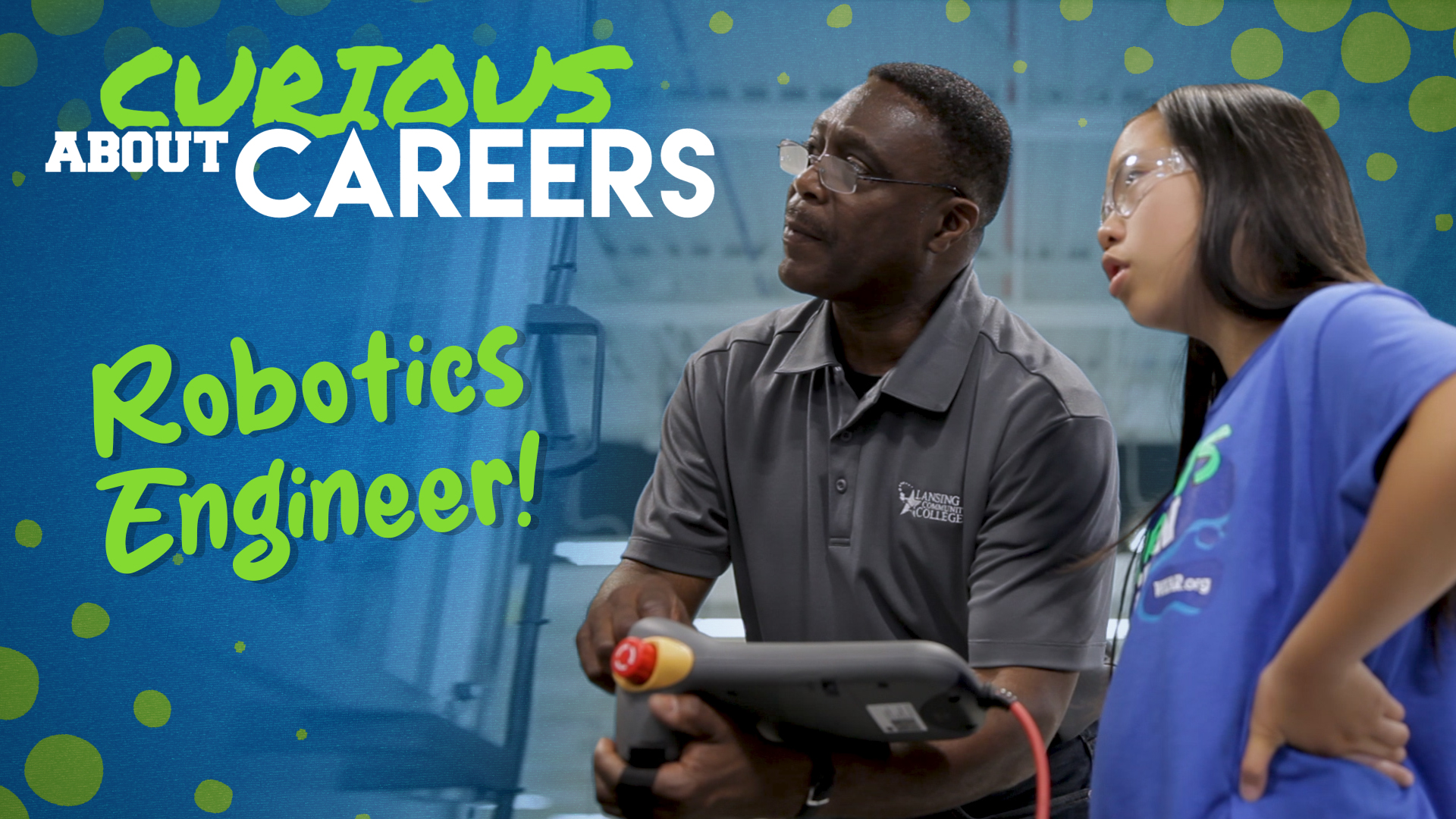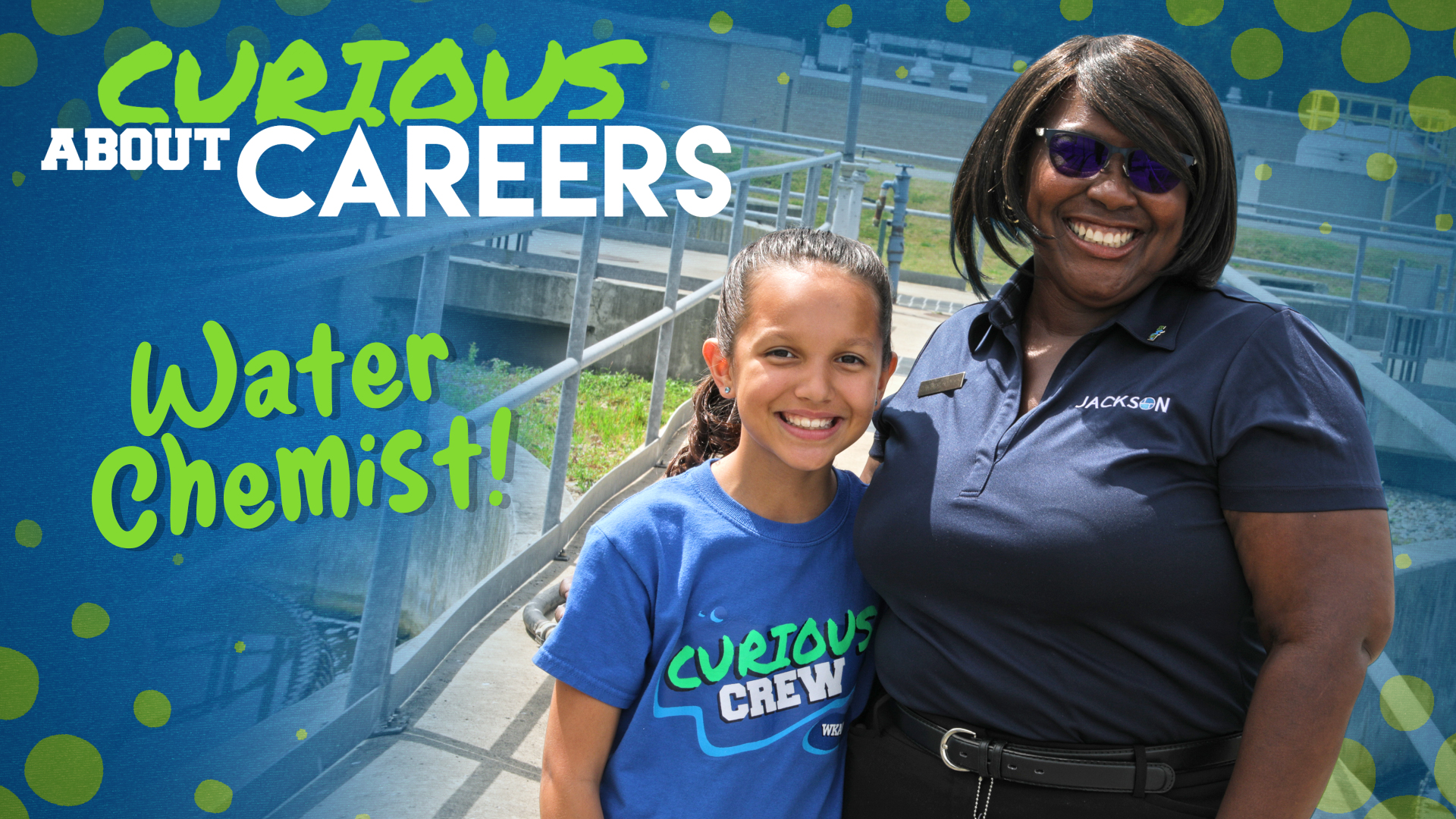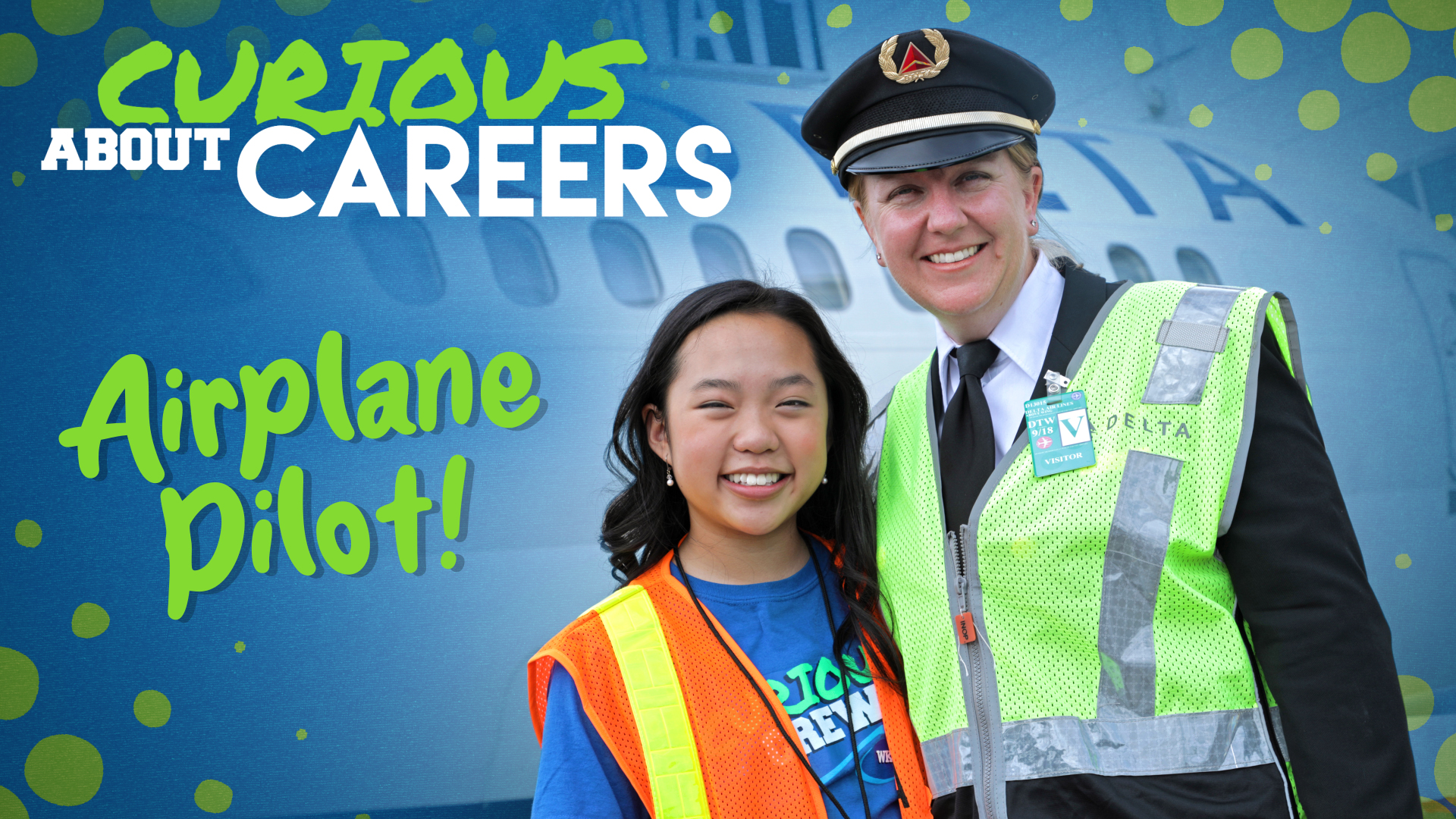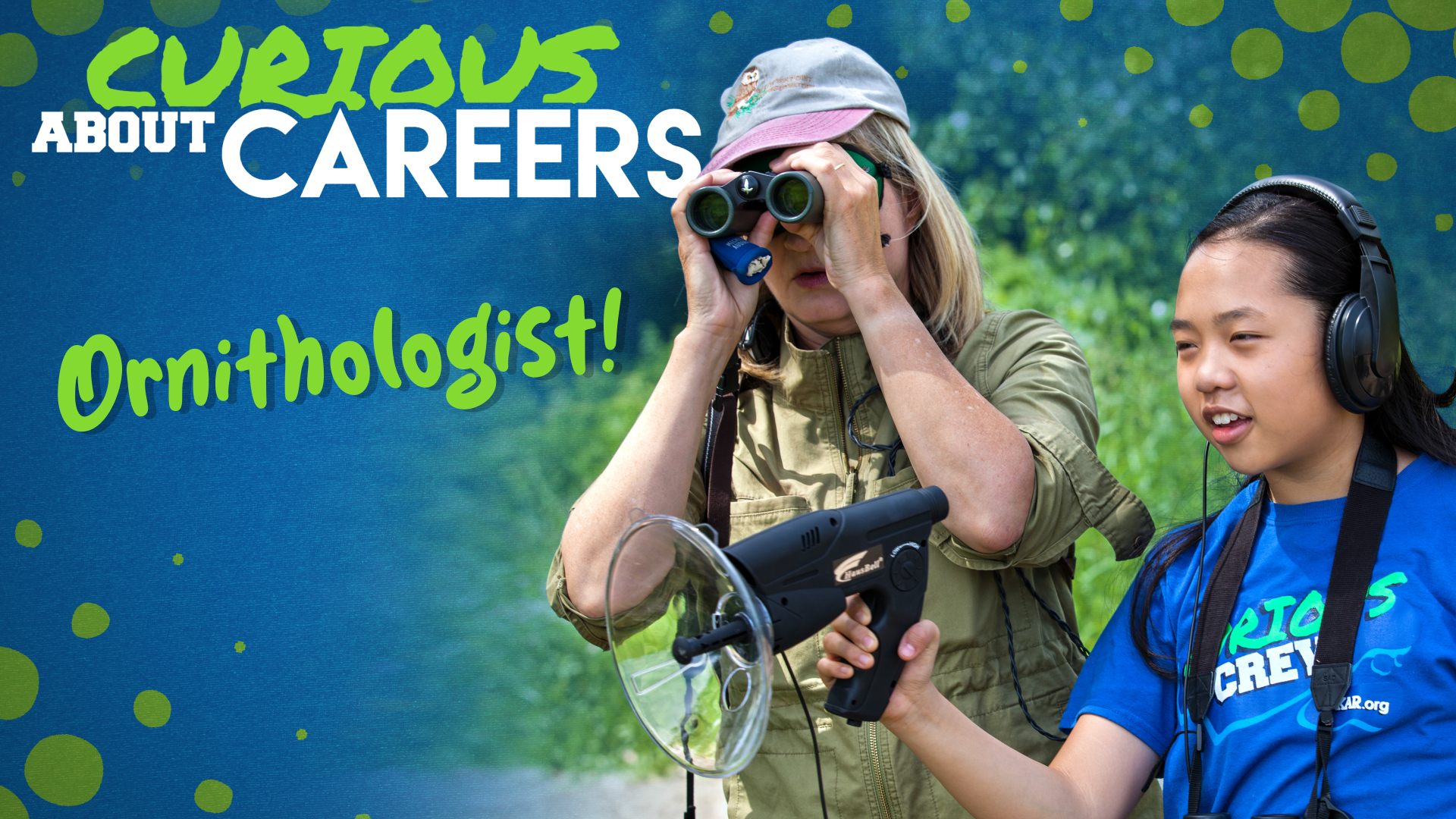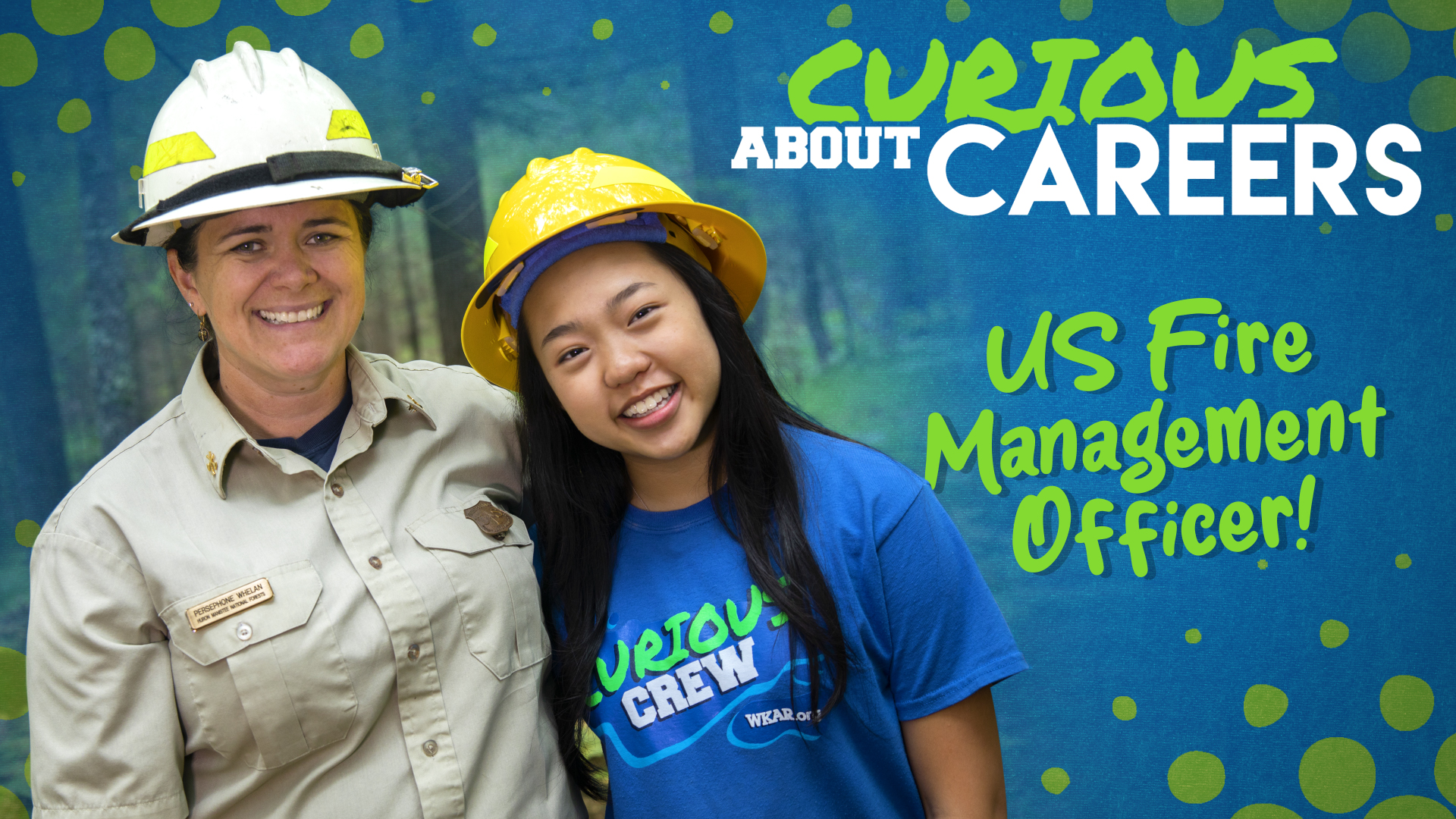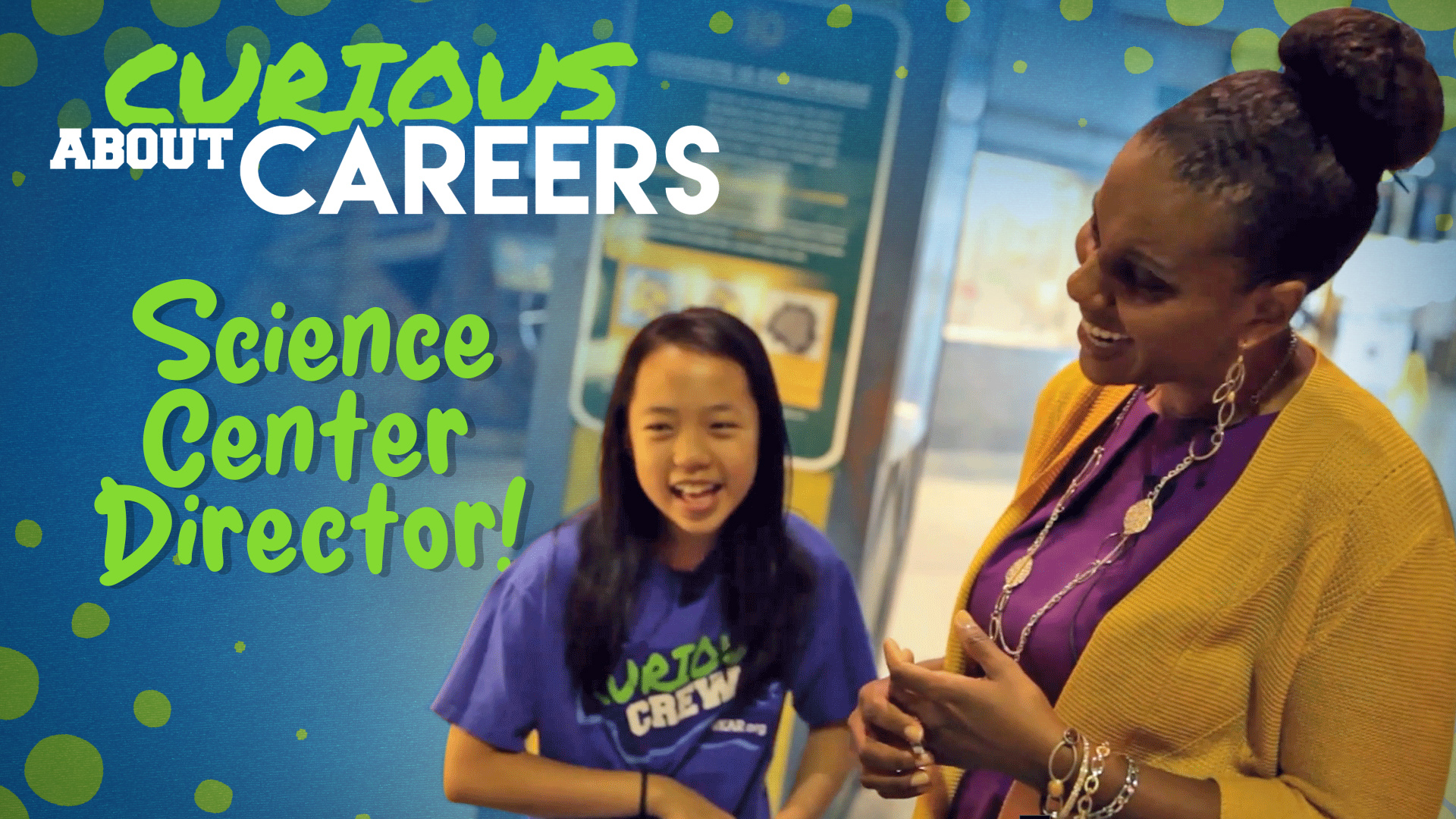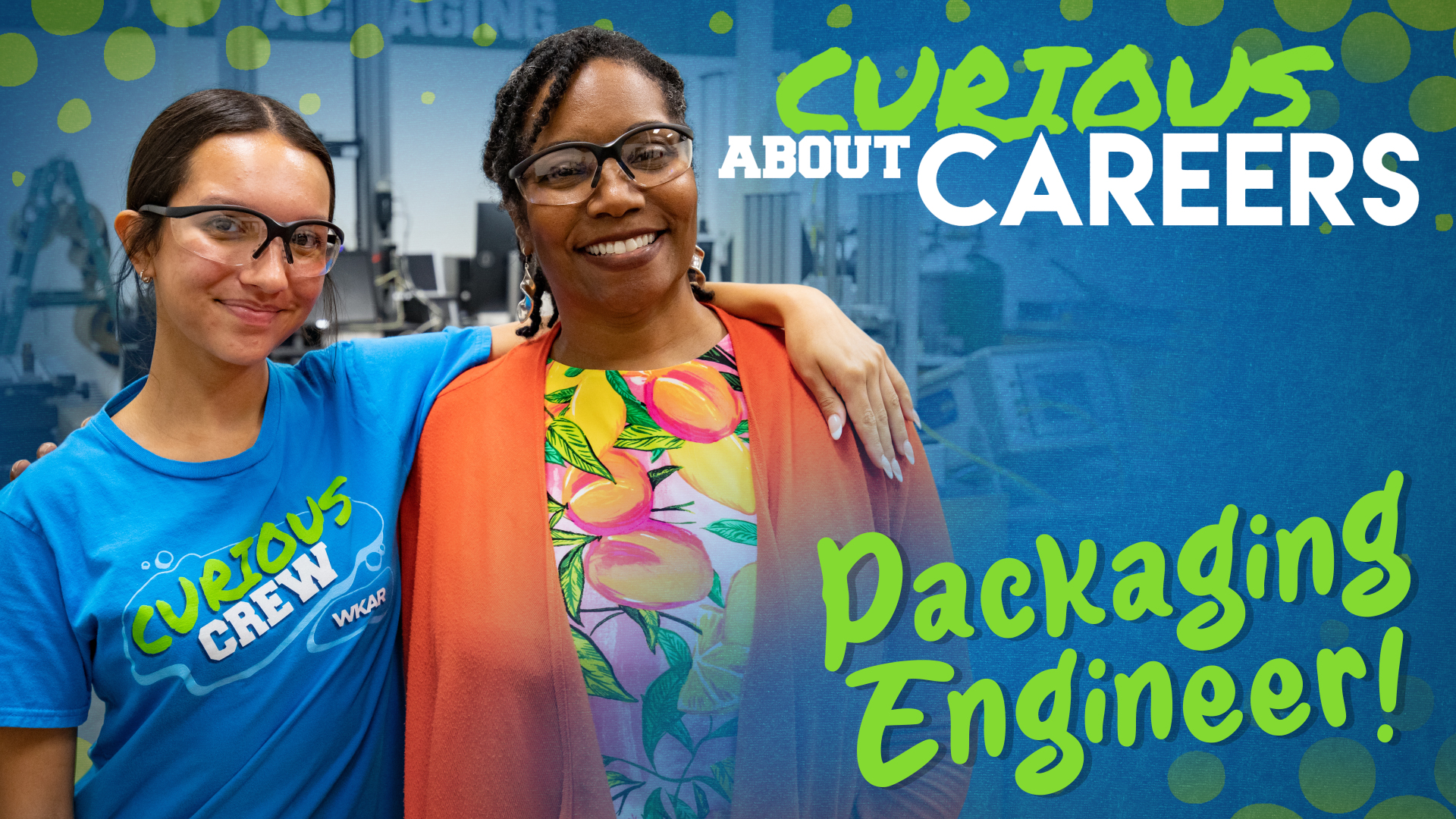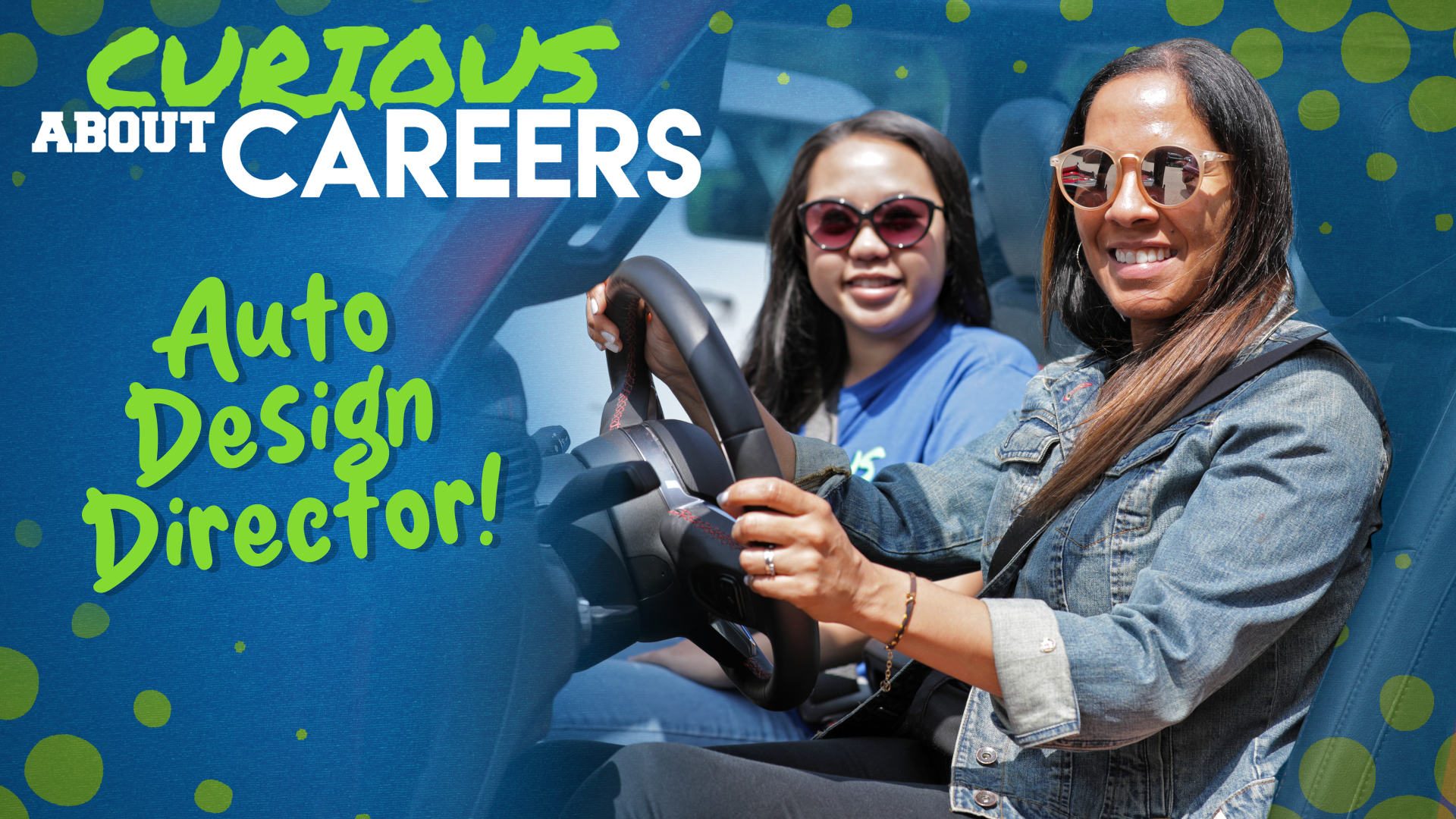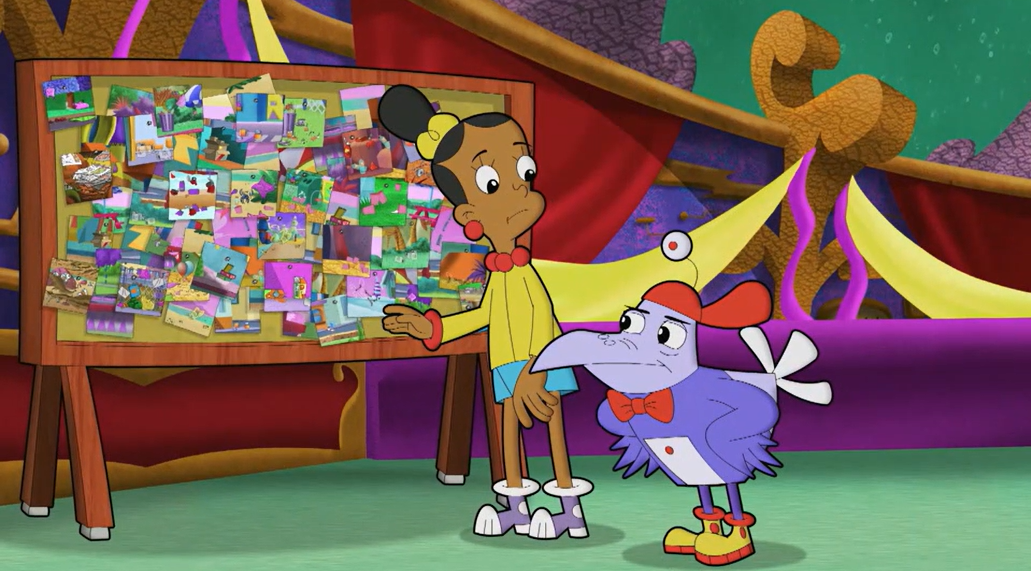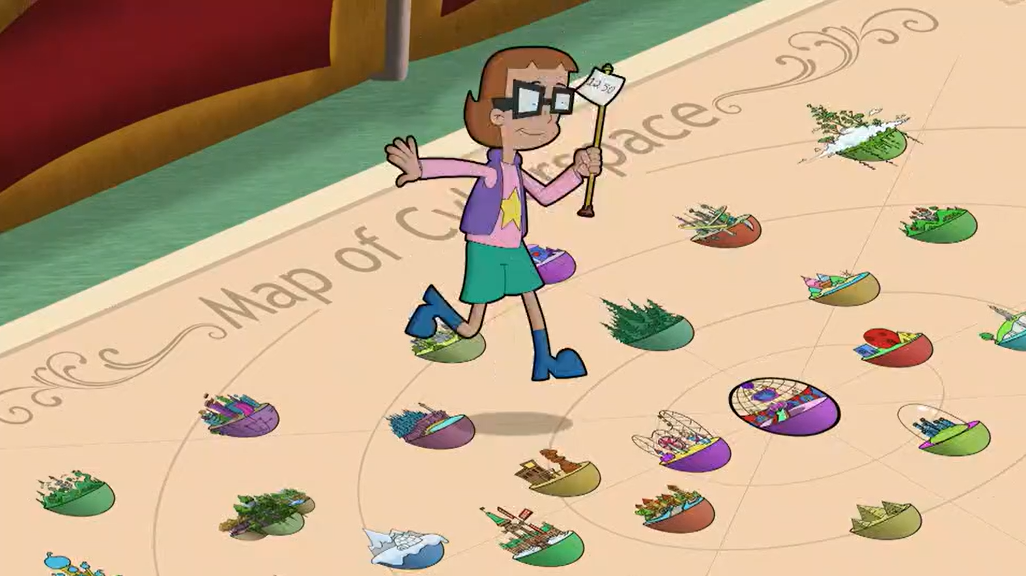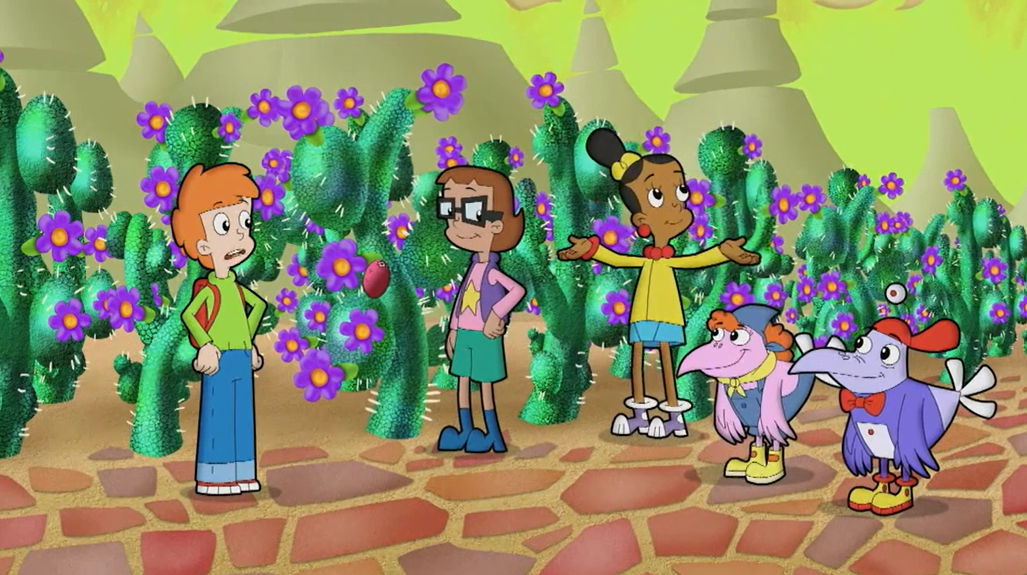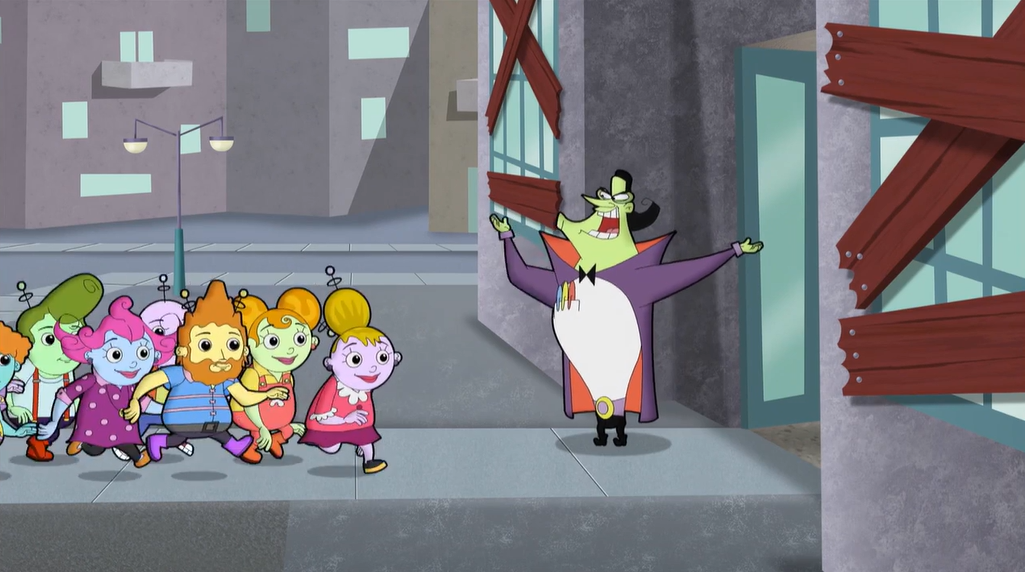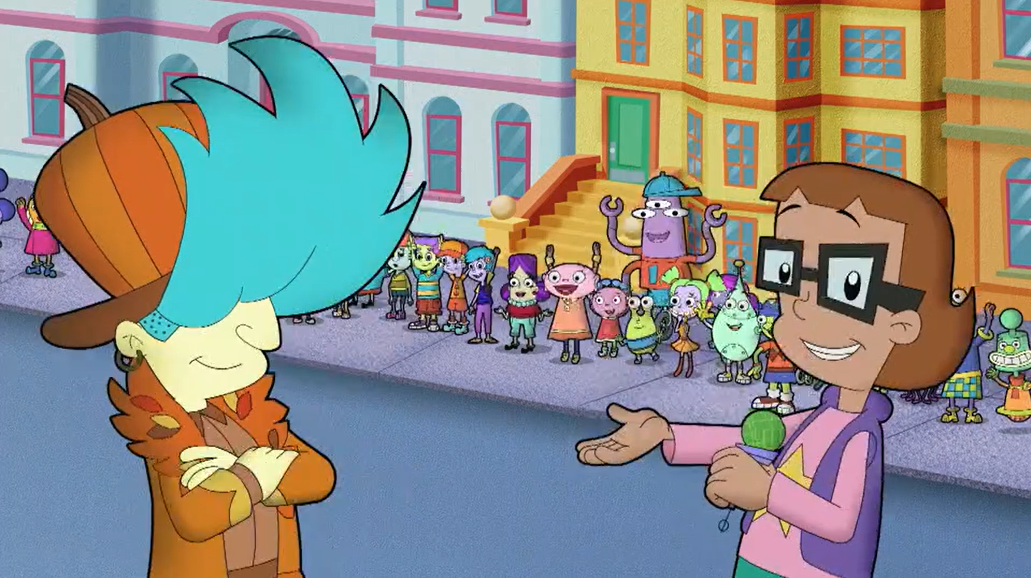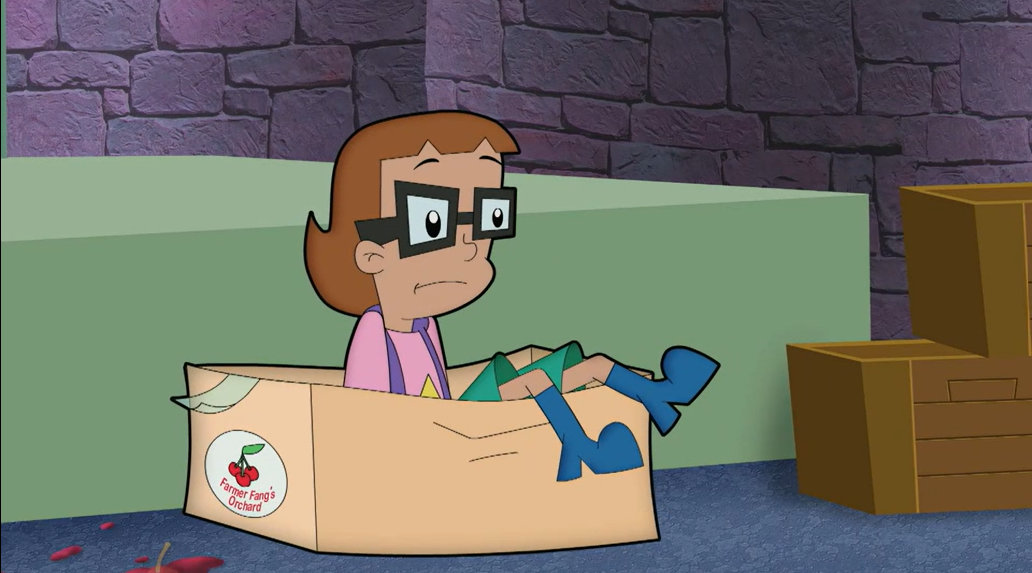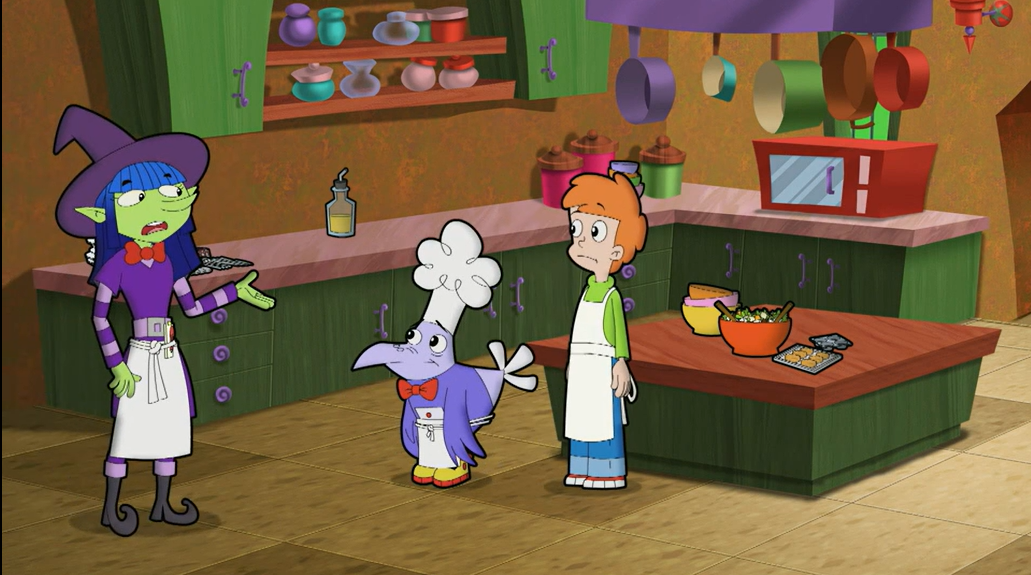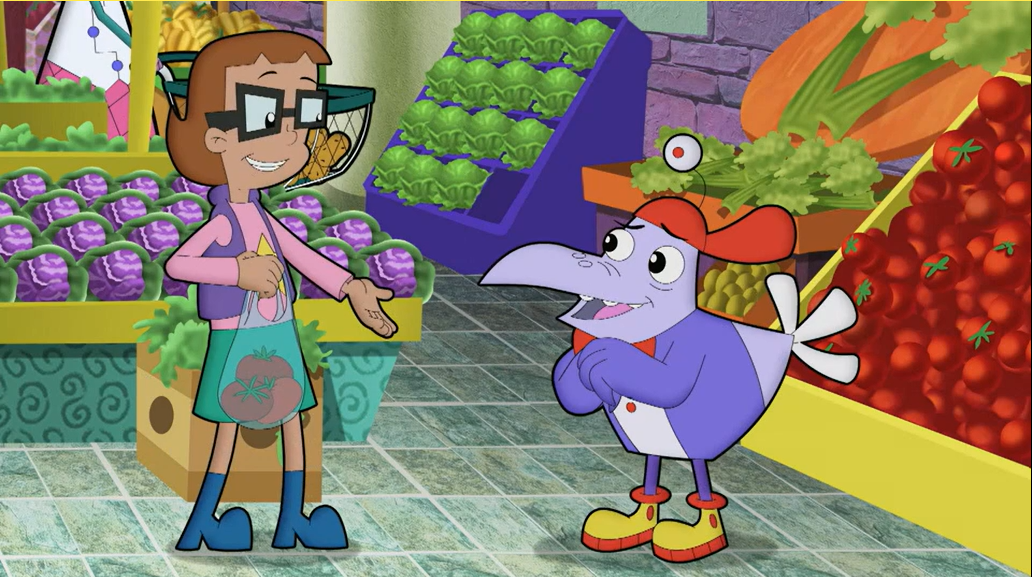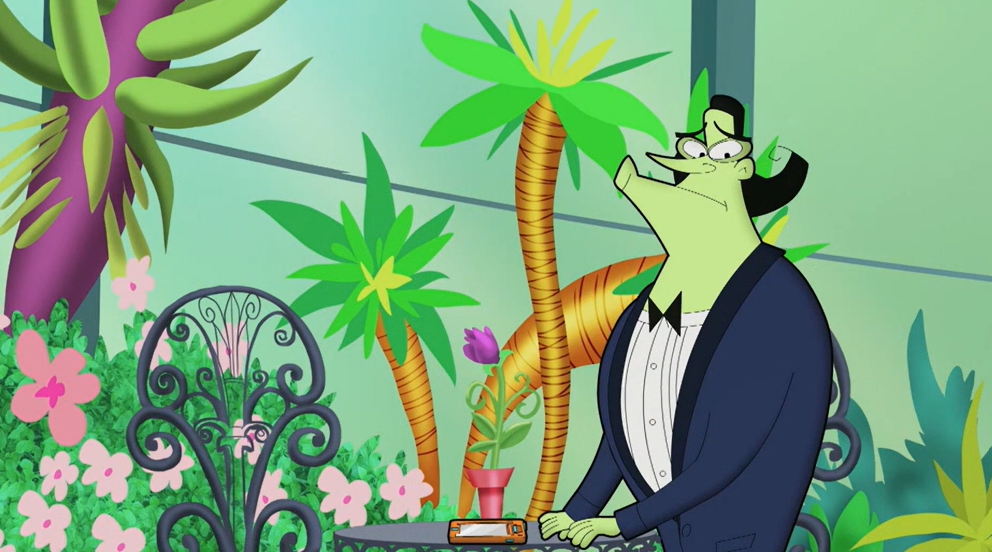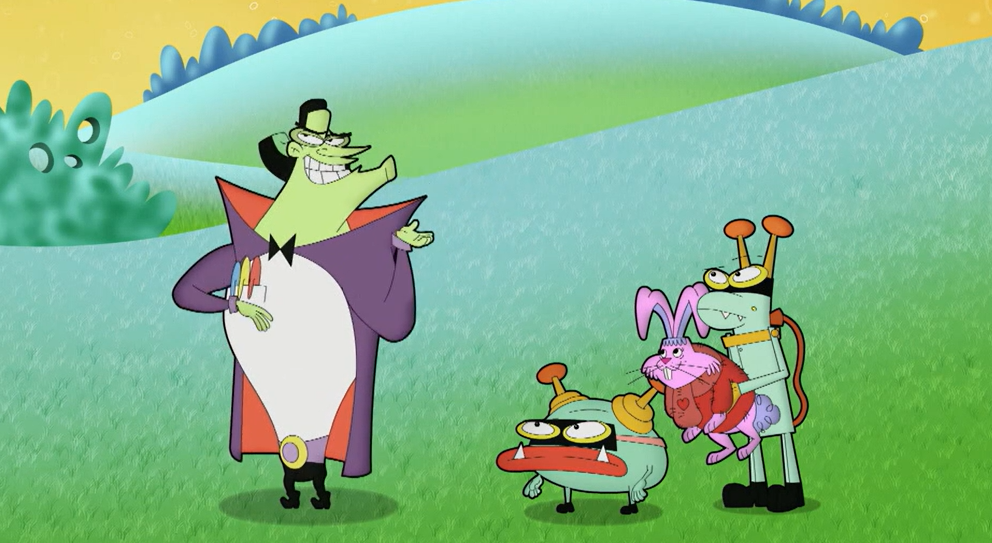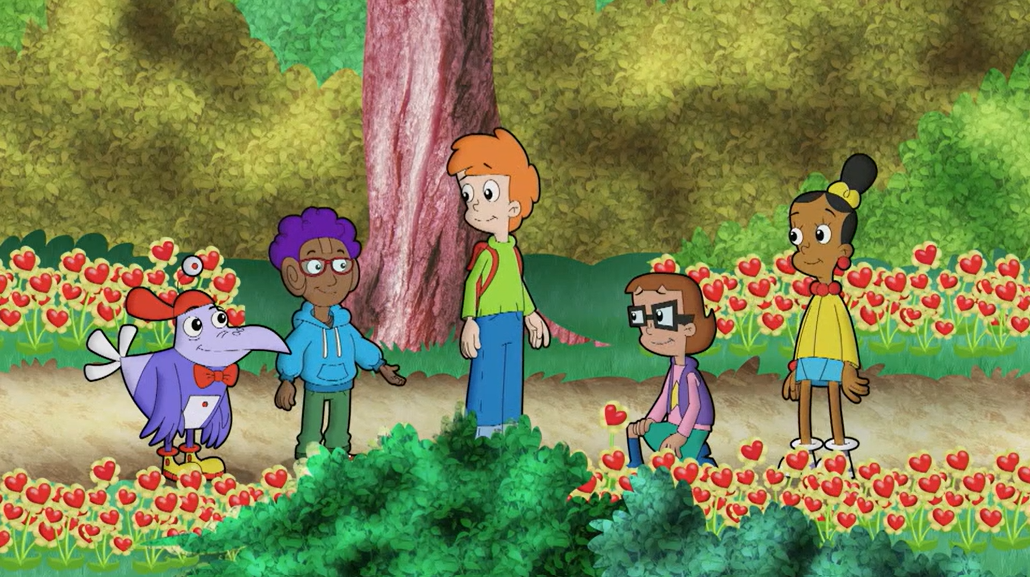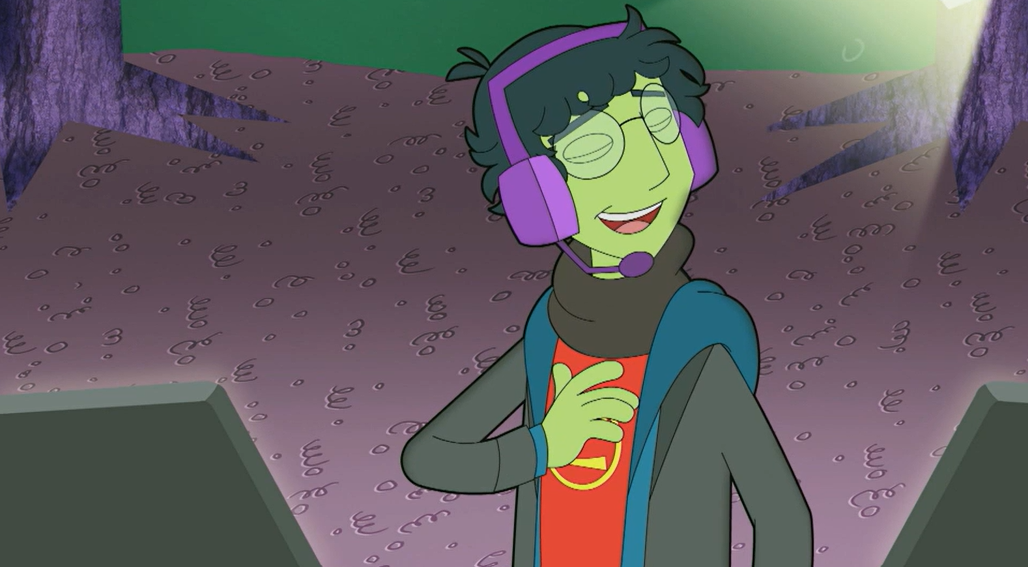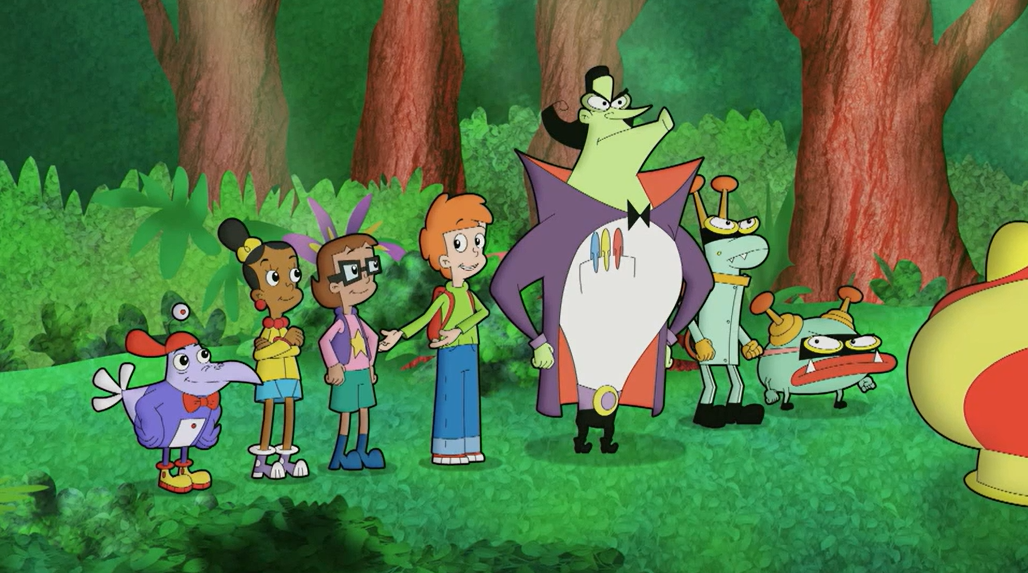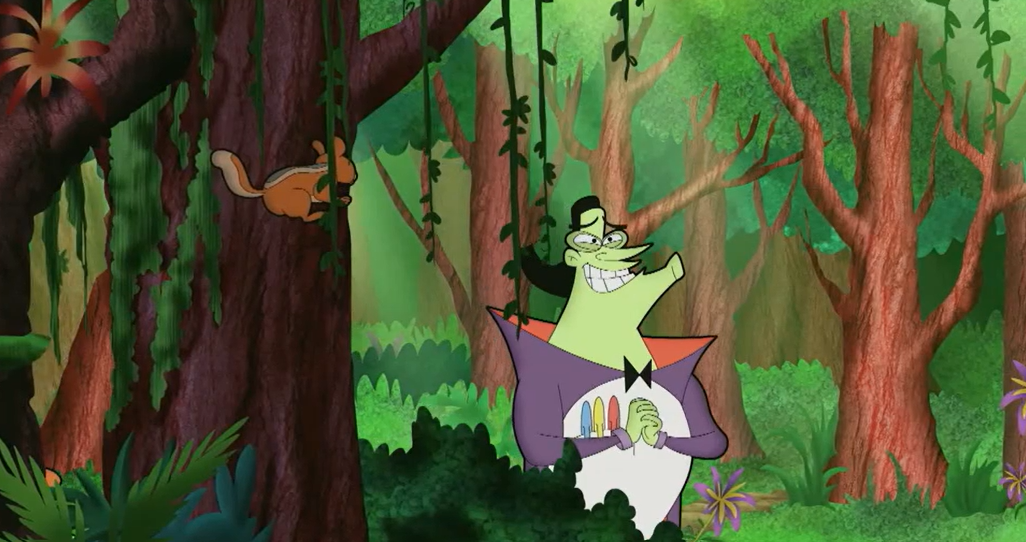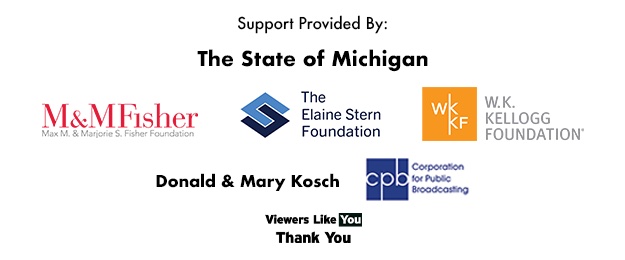Subjects
Grades
Shows
Standards
Lesson 5
These four women from around the world have fought bravely to save the environment. Our heroes are Rachel Carson from [...]
Join the Ann Arbor District Library's crew of puppet pals as they recommend and talk about new and interesting picture [...]
https://youtu.be/xi0zewvxWnQJoin the Ann Arbor District Library’s crew of puppet pals as they recommend and talk about new and interesting picture [...]
To Crescenciana Tan, family meant everything. After years of labor in the Philippines, she came to the U.S. to help raise her grandchildren, who called her Lola. Using StoryCorps Connect, her grandson, Kenneth, told his mother Olivia about the greatest lesson Lola taught him.
On January 28, 1986, NASA Challenger mission STS-51-L ended in tragedy when the shuttle exploded 73 seconds after takeoff. On board was physicist Ronald E. McNair, who was the second African American to enter space. But first, he was a kid with big dreams in Lake City, South Carolina.
“You know, it’s the little things that you do day in and day out that I admired for the last 8 years. I don’t think you can find a better person to be friends with.” Every week, Herman Travis loads up a heavy shopping cart full of groceries from a food bank to bring to elderly neighbors in a low-income housing complex. Over time, he’s become close with the residents, including Robert Cochran. Together they came to StoryCorps to talk about how meaningful this weekly gesture has become to them both.
Allen Hoe was as a combat medic in Vietnam. His oldest son, Nainoa K. Hoe, served as a first lieutenant infantry officer with the Army’s 3rd Battalion in Iraq. In January 2005, while leading his men through Mosul, Iraq, Nainoa was killed by sniper fire. He was 27. On Memorial Day in 2005, Allen traveled from Hawaii to Washington, D.C. for an event honoring Army nurses returning home from the war. He remembers meeting the Army nurse who had cared for his son after he had been shot and killed during combat in Mosul, Iraq.
Throughout the COVID-19 pandemic, Director of Microbiology Dr. Roberto Vargas worked long hours running tests at a hospital in Rochester, New York. Because of the risk of exposure, he made the difficult decision to isolate himself from his wife, Susan, and their four young kids. At the time of this conversation, he was living in the basement of their home. Using StoryCorps Connect, Dr. Vargas spoke virtually with his wife Susan and their 10-year-old son Xavier about the toll that this setup has taken on them, and the ways they have come together as a family despite the distance.
Zookeeper Annie Marcum shows investigator Genesis the nutritional science involved in the care of carnivores! From lions to tigers to otters, oh my, Genesis helps Annie with her daily dinner duties at Lansing’s Potter Park Zoo!
Computer Coder Hillary Lewandowski explains to Curious Crew investigator Janellyn how programming language is used to create interactive websites. Ms. Lewandowski is a Drupal Developer for Commercial Progression in Northville, MI.
Robotics and Automation Educator Sid Mosley demonstrates to Curious Crew investigator Janellyn how students and professionals retrain for new careers by learning how to program robots in manufacturing and automation. Mr. Mosley is the coordinator for the Center for Manufacturing Excellence at Lansing Community College in Lansing, MI.
Water Chemist Daveda Quinn shows investigator Genesis the importance of chemistry in keeping our water clean and safe! Daveda gives her a tour of the Wastewater Treatment Plant in Jackson, Michigan, and Genesis gets "hands on" training testing water and learning the importance of protecting this vital natural resource.
Genesis “strengthens” her knowledge of athletic training with LouAnne Jefferson! Athletic training is more than just push-ups and sit-ups! Genesis learns how different body movements and the use of bands, bosus, and even water treadmills help athletes build muscle strength and stay healthy!
Fasten your seat belt as Janellyn learns how to fly a plane with Delta Air Lines pilot Emily Coaker! Janellyn’s knowledge about aviation soars as Emily gives her a tour of the flight deck on a Boeing 717 at Detroit Metro Airport.
Janellyn’s knowledge about forest hydrology grows with Asia Dowtin! They venture into the forest to collect and analyze precipitation samples to calculate water movement through stem flow, which is vitally important to the urban planning and development of water systems.
Janellyn gets a bird’s eye view of ornithology from expert Pam Rasmussen! Ornithologist Pam Rasmussen explains the science behind the study of birds. Pam and Janellyn spend the day bird watching using all different kinds of equipment including binoculars, cameras, and listening devices! Janellyn also gets a tour of bird exhibits at the Michigan State University Museum.
Janellyn explores the benefits of prescribed burns and how they relate to convection with United States Fire Management Officer Persephone Whelen. Janellyn also learns about the various tools firefighters use and the safety precautions they must take in the field.
Michigan State University Athletic Turf Manager Amy Fouty shares the science behind creating athletic fields with kid investigator Genesis! Amy teaches Genesis the importance of having different types of turf for different sports, how to measure a field’s water level, and the overall care that goes into turf management.
Health Educator Bethany Thayer explains to Curious Crew investigator Janellyn how awareness of healthy lifestyles and making good choices can improve our overall well-being and help us live long lives. Ms. Thayer is the Director of the Center for Health Promotion and Disease Prevention at Henry Ford Health System in Detroit, MI.
Explore your possibilities at Detroit's Michigan Science Center as Dr. Tonya Matthews takes Janellyn on an interactive tour.
Janellyn has a GRRREAT! time with Kellogg Company packaging engineer Karen Keeder! Karen shows Janellyn the science that goes into the designing, labeling, and testing of the packages for various Kellogg's food products, including Cheez-It and Rice Krispies Treats.
Fiat Chrysler Automotive’s auto-design color and materials director LaShirl Turner shows Janellyn the science and art behind using various colors and materials for automobiles. Together they compare and contrast different materials in the FCA Design Dome, and Janellyn even gets to take a test drive!
Genesis is 'over-the-moon' to learn about astronomy with Jillian Bellovary! Jillian explains to Genesis what black holes are, how they form, and how she studies them using computer simulations.
Janellyn’s knowledge about space blasts off with NASA astronaut Jessica Meir! Jessica launches into her experience of what it’s like to be in outer space, including being a part of the first all-female spacewalk. Janellyn learns how Jessica’s love of biology led to her passion to become an astronaut with NASA.
Architectural Designer Tiffany Brown “builds” Janellyn’s knowledge about architecture! Janellyn learns the science and art that goes into the process of creating and constructing buildings in downtown Detroit.
Subjects
Grades
Shows
Lesson 5
These four women from around the world have fought bravely to save the environment. Our heroes are Rachel Carson from [...]
Join the Ann Arbor District Library's crew of puppet pals as they recommend and talk about new and interesting picture [...]
https://youtu.be/xi0zewvxWnQJoin the Ann Arbor District Library’s crew of puppet pals as they recommend and talk about new and interesting picture [...]
To Crescenciana Tan, family meant everything. After years of labor in the Philippines, she came to the U.S. to help raise her grandchildren, who called her Lola. Using StoryCorps Connect, her grandson, Kenneth, told his mother Olivia about the greatest lesson Lola taught him.
On January 28, 1986, NASA Challenger mission STS-51-L ended in tragedy when the shuttle exploded 73 seconds after takeoff. On board was physicist Ronald E. McNair, who was the second African American to enter space. But first, he was a kid with big dreams in Lake City, South Carolina.
“You know, it’s the little things that you do day in and day out that I admired for the last 8 years. I don’t think you can find a better person to be friends with.” Every week, Herman Travis loads up a heavy shopping cart full of groceries from a food bank to bring to elderly neighbors in a low-income housing complex. Over time, he’s become close with the residents, including Robert Cochran. Together they came to StoryCorps to talk about how meaningful this weekly gesture has become to them both.
Allen Hoe was as a combat medic in Vietnam. His oldest son, Nainoa K. Hoe, served as a first lieutenant infantry officer with the Army’s 3rd Battalion in Iraq. In January 2005, while leading his men through Mosul, Iraq, Nainoa was killed by sniper fire. He was 27. On Memorial Day in 2005, Allen traveled from Hawaii to Washington, D.C. for an event honoring Army nurses returning home from the war. He remembers meeting the Army nurse who had cared for his son after he had been shot and killed during combat in Mosul, Iraq.
Throughout the COVID-19 pandemic, Director of Microbiology Dr. Roberto Vargas worked long hours running tests at a hospital in Rochester, New York. Because of the risk of exposure, he made the difficult decision to isolate himself from his wife, Susan, and their four young kids. At the time of this conversation, he was living in the basement of their home. Using StoryCorps Connect, Dr. Vargas spoke virtually with his wife Susan and their 10-year-old son Xavier about the toll that this setup has taken on them, and the ways they have come together as a family despite the distance.
Zookeeper Annie Marcum shows investigator Genesis the nutritional science involved in the care of carnivores! From lions to tigers to otters, oh my, Genesis helps Annie with her daily dinner duties at Lansing’s Potter Park Zoo!
Computer Coder Hillary Lewandowski explains to Curious Crew investigator Janellyn how programming language is used to create interactive websites. Ms. Lewandowski is a Drupal Developer for Commercial Progression in Northville, MI.
Robotics and Automation Educator Sid Mosley demonstrates to Curious Crew investigator Janellyn how students and professionals retrain for new careers by learning how to program robots in manufacturing and automation. Mr. Mosley is the coordinator for the Center for Manufacturing Excellence at Lansing Community College in Lansing, MI.
Water Chemist Daveda Quinn shows investigator Genesis the importance of chemistry in keeping our water clean and safe! Daveda gives her a tour of the Wastewater Treatment Plant in Jackson, Michigan, and Genesis gets "hands on" training testing water and learning the importance of protecting this vital natural resource.
Genesis “strengthens” her knowledge of athletic training with LouAnne Jefferson! Athletic training is more than just push-ups and sit-ups! Genesis learns how different body movements and the use of bands, bosus, and even water treadmills help athletes build muscle strength and stay healthy!
Fasten your seat belt as Janellyn learns how to fly a plane with Delta Air Lines pilot Emily Coaker! Janellyn’s knowledge about aviation soars as Emily gives her a tour of the flight deck on a Boeing 717 at Detroit Metro Airport.
Janellyn’s knowledge about forest hydrology grows with Asia Dowtin! They venture into the forest to collect and analyze precipitation samples to calculate water movement through stem flow, which is vitally important to the urban planning and development of water systems.
Janellyn gets a bird’s eye view of ornithology from expert Pam Rasmussen! Ornithologist Pam Rasmussen explains the science behind the study of birds. Pam and Janellyn spend the day bird watching using all different kinds of equipment including binoculars, cameras, and listening devices! Janellyn also gets a tour of bird exhibits at the Michigan State University Museum.
Janellyn explores the benefits of prescribed burns and how they relate to convection with United States Fire Management Officer Persephone Whelen. Janellyn also learns about the various tools firefighters use and the safety precautions they must take in the field.
Michigan State University Athletic Turf Manager Amy Fouty shares the science behind creating athletic fields with kid investigator Genesis! Amy teaches Genesis the importance of having different types of turf for different sports, how to measure a field’s water level, and the overall care that goes into turf management.
Health Educator Bethany Thayer explains to Curious Crew investigator Janellyn how awareness of healthy lifestyles and making good choices can improve our overall well-being and help us live long lives. Ms. Thayer is the Director of the Center for Health Promotion and Disease Prevention at Henry Ford Health System in Detroit, MI.
Explore your possibilities at Detroit's Michigan Science Center as Dr. Tonya Matthews takes Janellyn on an interactive tour.
Janellyn has a GRRREAT! time with Kellogg Company packaging engineer Karen Keeder! Karen shows Janellyn the science that goes into the designing, labeling, and testing of the packages for various Kellogg's food products, including Cheez-It and Rice Krispies Treats.
Fiat Chrysler Automotive’s auto-design color and materials director LaShirl Turner shows Janellyn the science and art behind using various colors and materials for automobiles. Together they compare and contrast different materials in the FCA Design Dome, and Janellyn even gets to take a test drive!
Genesis is 'over-the-moon' to learn about astronomy with Jillian Bellovary! Jillian explains to Genesis what black holes are, how they form, and how she studies them using computer simulations.
Janellyn’s knowledge about space blasts off with NASA astronaut Jessica Meir! Jessica launches into her experience of what it’s like to be in outer space, including being a part of the first all-female spacewalk. Janellyn learns how Jessica’s love of biology led to her passion to become an astronaut with NASA.
Architectural Designer Tiffany Brown “builds” Janellyn’s knowledge about architecture! Janellyn learns the science and art that goes into the process of creating and constructing buildings in downtown Detroit.

